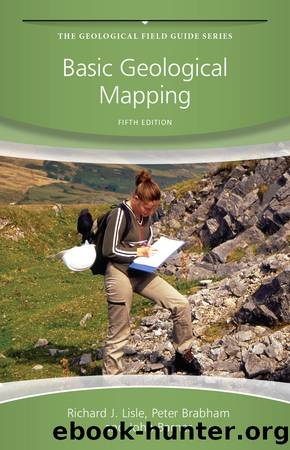Basic Geological Mapping by unknow

Author:unknow
Language: eng
Format: epub
Published: 2013-05-31T00:00:00+00:00
Figure 5.11 The principle of differential GPS (dGPS) systems. The use of both of Ground-Based Augmentation Systems (GBAS) and Satellite-based Augmentation Systems (SBAS) are illustrated.
Figure 5.12 Adapted Trimble marine dGPS system being used for landslide mapping in South Wales. Note marine dGPS antenna housed in rucksack.
Ground-based Augmentation Systems (GBASs) and Satellite-based Augmentation Systems (SBASs) exist such as the European Geostationary Navigation Overlay Service (EGNOS) that send out continual dGPS correction information. For maritime applications around the world, various agencies have set up marine dGPS beacons, usually in lighthouses located around the coast. Such systems have still proven accurate for geologists working 100 miles inland of the UK's coastline.
To achieve the ultimate in precision using GPS systems, geologists, surveyors and civil engineers are now using RTK systems in the field. These systems use two GNSS units, a base and a rover. Both GNSS units lock onto many satellites, but also communicate between themselves via a radio link. The semi-permanent base station knows its position on the Earth's surface to around a 10 cm accuracy, but the rover knows its position relative to the base to millimetre accuracy. By just walking around with the rover unit, these RTK systems can rapidly produce millimetre accurate topographic data that can be used to create very accurate cross-sections or DTMs of outcrops for geological mapping.
Download
This site does not store any files on its server. We only index and link to content provided by other sites. Please contact the content providers to delete copyright contents if any and email us, we'll remove relevant links or contents immediately.
Goodbye Paradise(3755)
Atlas Obscura by Joshua Foer(2920)
Tokyo by Rob Goss(2400)
Borders by unknow(2272)
Lonely Planet New York City by Lonely Planet(2186)
DK Eyewitness Top 10 Travel Guides Orlando by DK(2146)
Top 10 Dubai and Abu Dhabi by DK Travel(2072)
Tomb of the Panzerwaffe: The Defeat of the Sixth SS Panzer Army in Hungary 1945 by Aleksei Isaev & Maksim Kolomiets(1842)
Rick Steves London 2018 by Rick Steves & Gene Openshaw(1833)
Dirt by Bill Buford(1644)
The Path Between the Seas by David McCullough(1581)
the fault in our stars by john green(1520)
Atlas of Improbable Places by Travis Elborough(1511)
The Travels by Marco Polo(1474)
Tokyo on Foot by Florent Chavouet(1473)
The Lives of Conn Smythe by Kelly McParland(1449)
Need by Unknown(1438)
The Lord of the Rings: The Fellowship of the Ring, the Two Towers, the Return of the King by J. R. R. Tolkien(1407)
Still Alice by Lisa Genova(1397)
